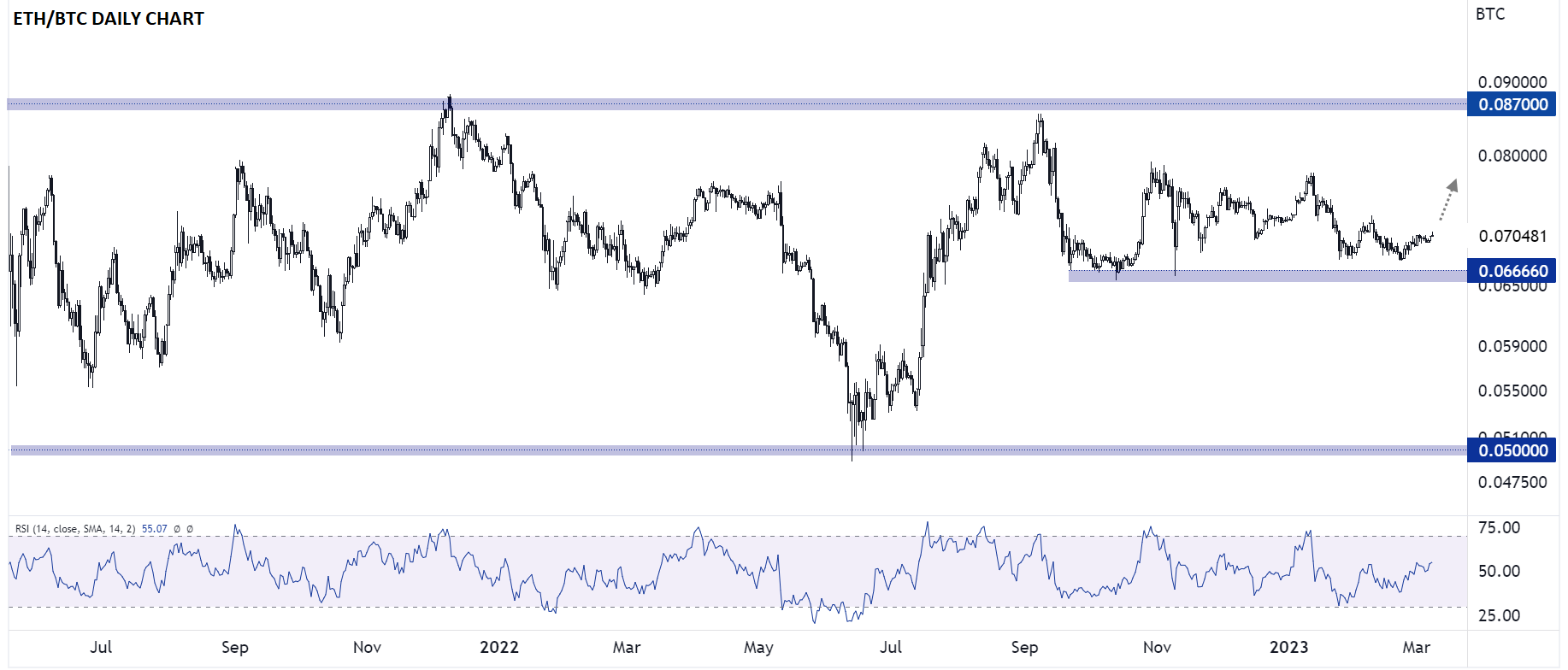Crypto corner Is it the end of the crypto winter or just a false spring
Important takeaways
- Major cryptoassets like Bitcoin and Ethereum may have seen their lowest values for this cycle last year.
- Regulatory and macroeconomic risks may still lead to a short-term withdrawal.
- Ethereum’s contracting supply, even in the depths of a crypto winter, bodes well for relative outperformance compared to Bitcoin.
If you haven’t been paying close attention, you might be surprised to learn that major crypto assets like Bitcoin and Ethereum are up nearly 50% from their FTX implosion lows set just over three months ago.
The strong price performance in major crypto assets has led some enthusiasts to question whether we have seen the end of the so-called “crypto winter”, paving the way for the next big bull market. The answer to that question is nuanced, however there is certainly a compelling case that the worst of winter is behind usalthough crypto traders shouldn’t necessarily put on their tank tops, swim trunks and sunglasses just yet!
The collapses of a dozen+ major crypto companies amid widespread deleveraging in the space led to no doubt the worst “forced sale” of cryptoassets the asset class has seen in its short existence. From that perspective, it looks increasingly likely that the bottoms we saw in Bitcoin and Ethereum last year may mark the low for this cycle.
But as the recent turmoil in the crypto bank Silvergate has shown, the space is far from out of the woods, and the biggest risk to monitor is the potential for draconian regulations in the US and Europe. After the politically well-connected former CEO of FTX, Sam Bankman-Fried, fell from grace late last year, US politicians are more skeptical than ever about crypto. The potential collapse of crypto’s largest bank could create fears that crypto volatility will spill over into the traditional banking system.
The other major risk for crypto assets is related to the macroeconomic environment. Inflation and labor markets across the developed world are proving more resilient than expectedis it likely that central banks will have to raise interest rates more aggressively, and leave them at an elevated level for longer than previously expected. Higher interest rates provide a more compelling alternative investment and represent a headwind for more speculative markets, such as cryptoassets.
Bitcoin Technical Analysis
As the chart below shows, the world’s oldest cryptocurrency stalled again at previous resistance of $25K last month. Given the aforementioned risks, a drop back towards the previous resistance-turned-support at 21,250 looks relatively likely, and a move down towards the psychologically significant $20K level or even $18,500 cannot be ruled out. But as it stands, long-term “hodlers” are likely to scoop up any dips toward last year’s lows as a potential “higher low” takes shape.

Source: StoneX, TradingView
Ethereum Technical Analysis
Looking at the world’s second largest crypto asset, one narrative to watch in the coming months is the deflationary supply of Ethereum. Thanks to the transition to proof-of-stake and the EIP-1559 “burning” of part of the gas used for transactions, the total supply of ETH has decreased by -0.4%/year, even in the depths of the crypto winter; this rate may well accelerate towards -1 or -2%/year in the next bull market. To put it simply, while the supply of Bitcoin will continue to increase until 2140, when we are all dead, the supply of Ethereum already reached its maximum supply last year (assuming a basic level of network usage).
That dynamic may bode well for a potential “flipping” in the next cycle. Looking at the ETH/BTC chart, the prices of the two largest crypto assets have been relatively flat compared to each other for almost two years. A rally back towards 0.087 in this ratio and a possible break above that level could herald a period of better performance in Ethereum.

Source: StoneX, TradingView
— Written by Matt Weller, Global Head of Research
Follow Matt on Twitter @MWellerFX


